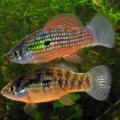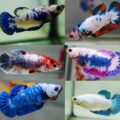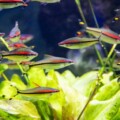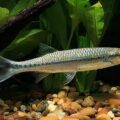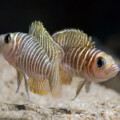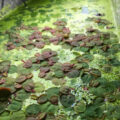The Chinese High-Fin Banded Shark requires special care practices at different stages of its life. This guide covers every care aspect of keeping these fish beautiful fish in large home aquariums or ponds.
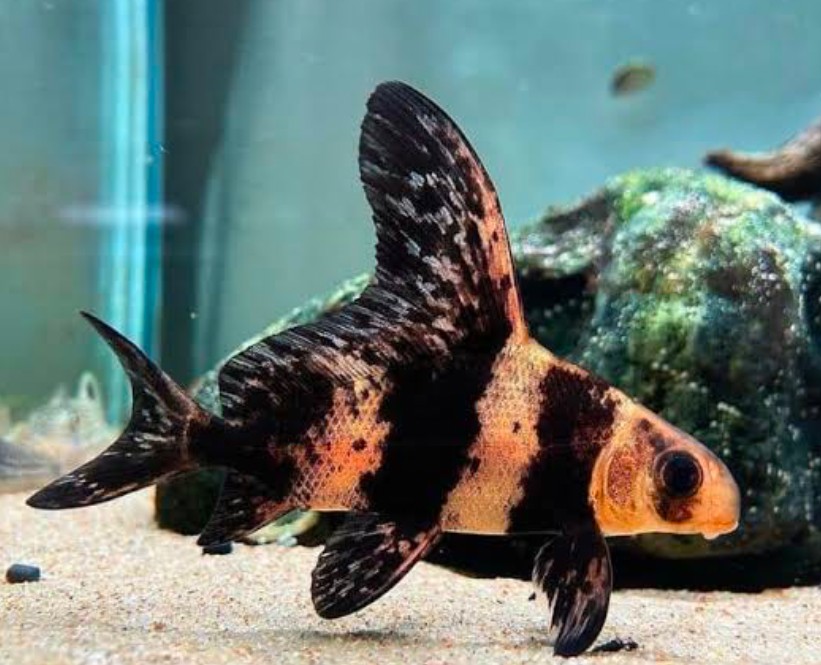
Introduction
Myxocyprinus asiaticus, the Chinese High-Fin Banded Shark, is a freshwater fish with a high dorsal fin and banded scales that fade as they mature. Because of its scary name and evolving appearance with age, this species is often misunderstood.
In this Myxocyprinus asiaticus species guide, you’ll learn how to care for this fish from juvenile to adult, which grows very large and loses its bands. This Chinese High-Fin Banded Shark overview will help you understand why it requires advanced planning and space for ownership outside its natural habitat.
Author’s Note: Check out our post on the 14 Small & Big Freshwater Pet Sharks for more Freshwater Home Aquarium compatible shark lookalikes.
Native Habitat and Seasonal Adaptability
Chinese High-Fin Banded Sharks are a Yangtze River fish species. As natural residents of the Chinese river basin, they prefer cooler water temperatures.
However, despite being a cool-water freshwater fish, Myxocyprinus asiaticus makes seasonal movements in the wild. They migrate during their spawning season, between February and April, to faster and shallow waters. Afterwards, they swim back to the Yangtze River.
To keep this species healthy and safe in an aquarium or outdoor pond, habitat of Myxocyprinus asiaticus you must recreate the oxygen-rich Myxocyprinus asiaticus habitat.
Building a Proper Aquarium or Pond Setup

Preparing a High-Fin Shark tank setup depends on your pet’s size and number. This species starts as an average-sized fish and grows into a large adult. So, follow these recommendations for an ideal setup from the tank’s size to its operational system.
Tank or Pond Size

Size is the first consideration when designing an aquarium for freshwater giants like the Chinese High-Fin Banded Shark.
You’ll need an extra-large tank of at least 200+ gallons for adults, and because that will take up space, it’s better to get an outdoor pond. It gives your Chinese High-Fin Banded Shark plenty of swimming room and allows for better long-term care.
Environmental Conditions
As a coldwater pond fish, the ideal temperature range in the tank or pond is 60–75°F with a strong water flow to encourage your Chinese High-Fin Banded Shark’s active swimming nature.
Install a strong filtration device to keep the water pristine and an oxygenation system to maintain high oxygen levels and aid respiration.
Aquascape

Chinese high-fin banded sharks are a sensitive species, so prioritize safety and comfort over aesthetics when aquascaping. Luckily, there’s a way to build a themed environment with the right decorative elements.
Use smooth substrate like fine sand and smooth pebbles for the floor, then add driftwood to release water-softening tannins.
Arrange live plants on the tank’s edge to create ample swimming zones for your pets while beautifying the tank. You can add other themed decor pieces like shipwrecks or zen stones, but ensure they don’t obstruct water flow or movement.
Juvenile vs. Adult Appearance: Know the Transformation
So far, you’ve read about how Chinese High-Fin Banded Sharks change appearance as they age. Now, it’s time to look closer at the Myxocyprinus growth stages.
Color Pattern

This freshwater fish’s appearance transformation distinguishes juveniles from adults for aquarists and fish hobbyists.
Juvenile Myxocyprinus asiaticus have bold black and white vertical bands on their scales with an exaggerated high dorsal fin.
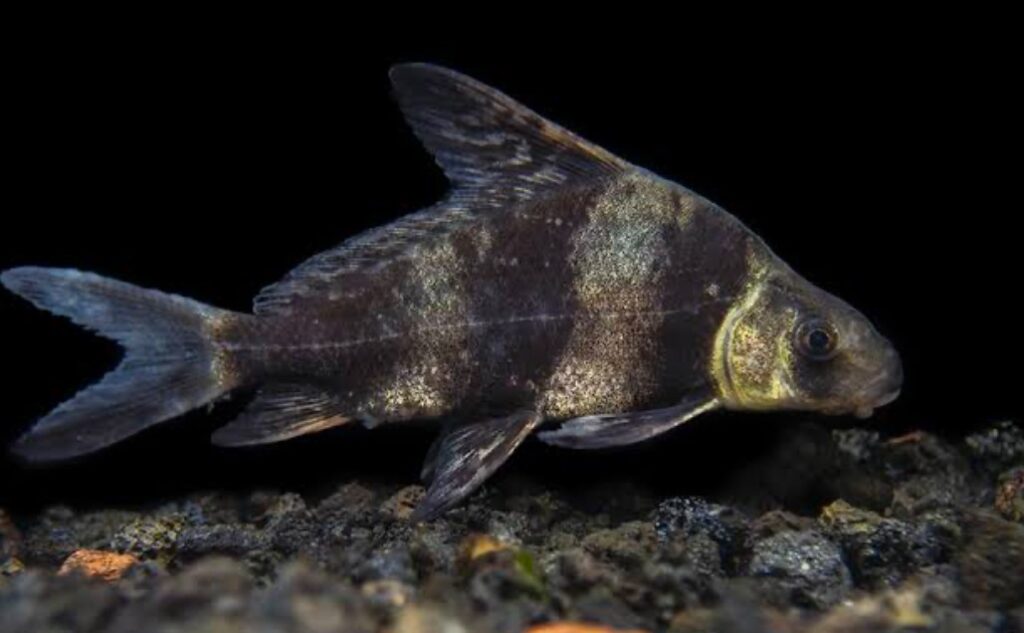
As they grow older, Chinese High-Fin Banded Sharks become larger, growing up to 3ft long with a more torpedo like body. This expansion causes their bands to fade into each other and form a darker brown-gray shade.
Unique Traits
Although this species has almost the same physique at all stages, the juvenile High-Fin Banded Shark lives up to its name with its dramatic dorsal fin. As it ages, the fin gets shorter, and its body stretches into a torpedo shape.
Unlike other shark catfish species, Chinese High-Fin Banded variants lack barbels. Instead, they have thick lips with comb-like teeth for chewing all kinds of food.
Feeding the Chinese High-Fin Banded Shark: Herbivore with Protein Needs
The Chinese High-Fin Shark diet is omnivorous; however, it leans more towards plant matter than animal sources. While you should consider your pet’s preferences when making meals, you must also consider their health and well-being.
Ensure they have a regimented diet that nourishes them and keeps them looking vibrant.
Feeding Frequency
Here are some techniques for coldwater omnivore fish feeding:
- Feed your pets 1–2 times daily, preferably in the morning and night (12-hour intervals)
- Serve sinking foods.
Diet Suggestions
Zucchini slices, spirulina pellets, insect larvae, spirulina flakes, algae wafers and soft vegetables are some Myxocyprinus asiaticus food preferences. However you must also supplement them with nutritious fruits, vegetables, and animal matter such as bloodworms or shrimps as occasional high-protein treats.
Once the food sinks to the bottom, your Chinese High-Fin Banded Shark will easily access it unless there’s a faster and more aggressive fish or species in its pond.
Author’s Note: For more on feeding your aquatic pets check out The Ultimate Guide to Fish Food: Pros and Cons & Best Choices!
Selecting Tank Mates for Long-Term Peace
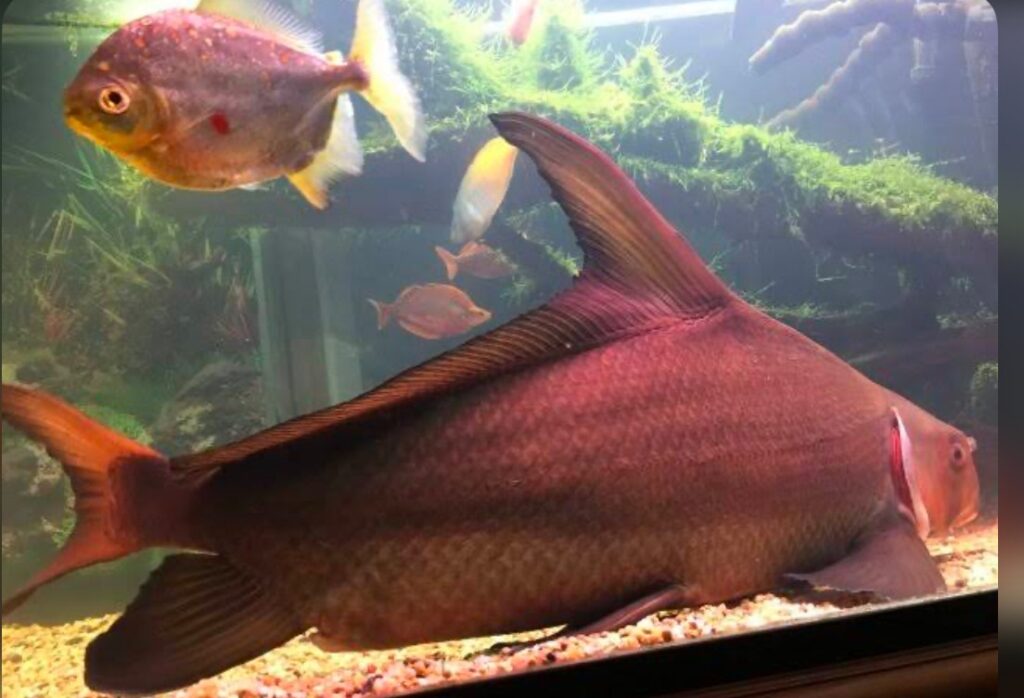
This species is a peaceful, large aquarium fish that deserves to live in harmony with other peaceful, cool-water fish that can tolerate a similar growth rate and environment.
These peaceful Myxocyprinus asiaticus tank mates won’t outcompete for resources or stress your pets in any way. They also won’t become prey for your Chinese High-Fin Banded Shark.
Compatible Species
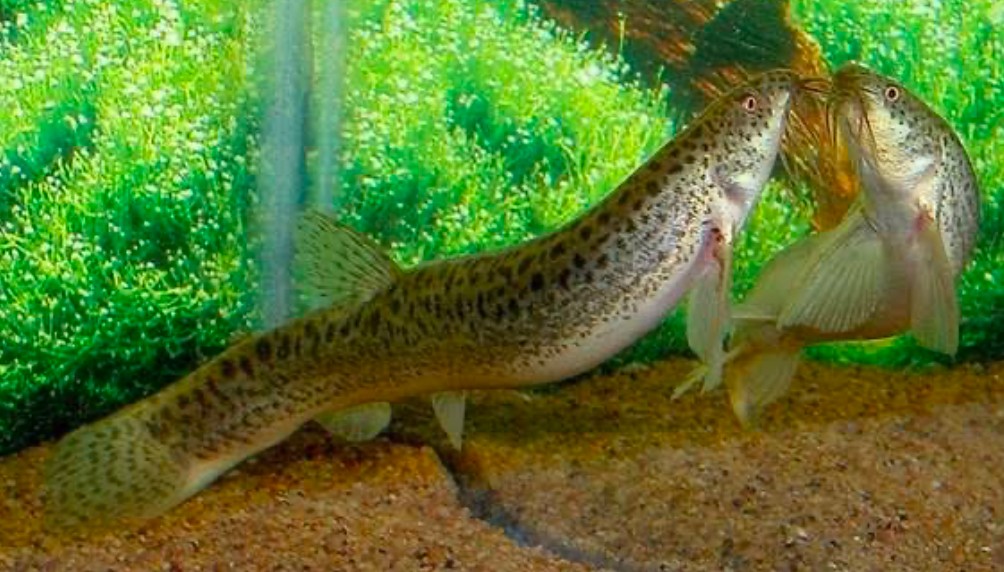
Some peaceful pond companions for coldwater fish include Koi, goldfish, and Weather loaches.
Species to Avoid
Following the rules for harmony, you know how to avoid aggressive or territorial fish. It’s best to keep Chinese High-Fin Banded Sharks in a species-only pond.
If you must pair them, keep only similarly sized companions and specifically avoid tropical fish, small tetras, or aggressive cichlids.
Breeding Challenges and Captive Limitations
Breeding rarely occurs in captivity due to this species’ complex seasonal cues and size requirements. However, high-fin banded shark reproduction typically occurs on commercial farms in Asia, with specimens from the Yangtze River.
Breeding Behavior
In the wild, Chinese High-Fin Banded Shark is a migratory spawner. It moves from its deep slow-moving waters to shallow, fast-flowing rivers during spring to breed and spawn its young. Beacsue these seasonal cues are required to reproduce successfully in commercial farming facilities, breeding Myxocyprinus asiaticus is rare.
Captive Breeding
There is no accurate report on captive breeding for this species or other shark variants. So, if you want to raise a juvenile Chinese High-Fin Banded Shark, you’d have to get it from an Asian aqua-trade market.
Common Health Risks and Coldwater Care Tips

Discuss common issues like stress from improper temperatures or poor oxygenation. Here are some more Myxocyprinus asiaticus health guide tips to provide optimal living conditions for your pets.
Watch For
Observe your pets daily and check for signs of illness, such as Lethargy, faded coloration, and surface gasping. Immediately quarantine the affected fish and improve the tank conditions as first aid. However, if symptoms persist, visit a vet for advanced treatment.
Maintenance Tips
Avoiding stress in pond fish by providing optimal tank setups, peaceful tank mates, and adequate omnivorous food is the best maintenance. Here are specific coldwater fish care tips:
- Use chillers for indoor ponds to avoid warm, tropical environments
- Maintain stable, clean water with filters, stabilizers, and water testers
- Ensure free-flowing water movement
- Install oxygen dispensers and use breathable lids for aeration.
Lifespan and Long-Term Aquarium Planning
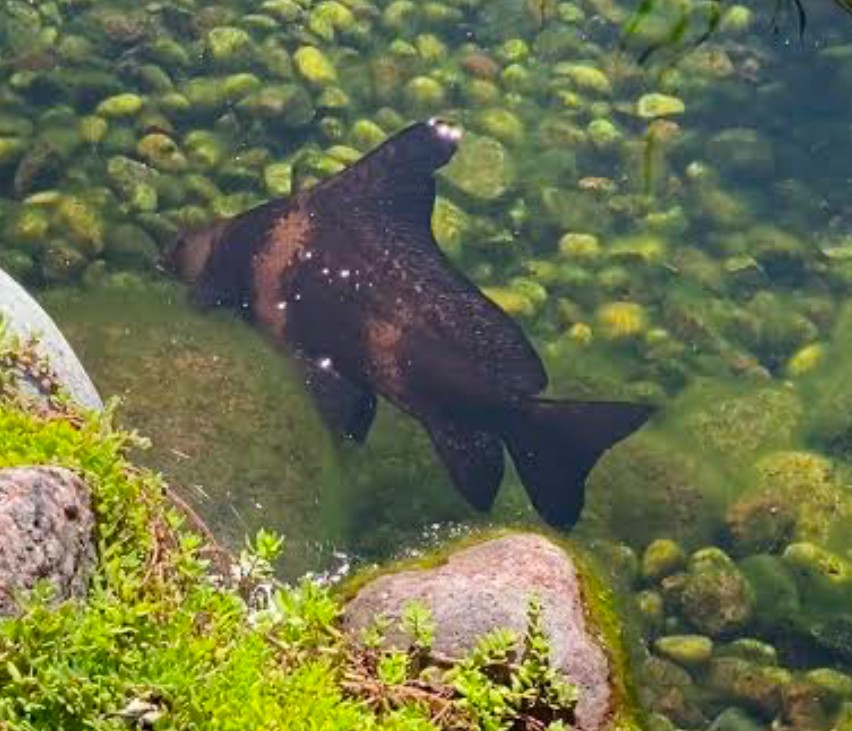
If you want to maximize your High-Fin Shark lifespan of 15-20 years, then you must provide it proper care detailed in this guide.
Preparing to house a large ornamental coldwater fish like the Chinese High-Fin Shark means you’ll consider their long-term size, visual changes, and activity levels.
Growth Rate
If you’re keeping this species in an ornamental tank you should know that it has rapid early growth and stretches up to 36 inches which is 3ft long in maturity. So, provide a pond that has a wide swimming space even if it has bold decor inside and around it.
Scroll up for details of an ideal tank setup.
Planning Note
Ponds aren’t the only enclosures for this species but they’re the best to provide. Add chillers of the pond is indoors to preserve its cool water temperatures.
For more notes on long-term care for freshwater fish, I recommend periodic tank cleaning, water changes, and pet inspections to certify their health status.
Conclusion: A Visual Marvel with a Commitment
That’s all on this coldwater aquarium fish review. With this Myxocyprinus asiaticus care summary, you can successfully raise this species from its captivating juvenile stage to maturity and watch it thrive for 15 – 20 years.
This Chinese High-Fin Shark comprehensive guide recommends keeping this species in large tank systems or ponds because of its specific nature and needs.
If you think you can handle these, let us know in the comments below.

